We try to provide safe places for pollinators (and other insects) winter, spring, summer, and fall.
During spring, summer, and fall days, we have plenty of places for bees and other insects to be protected from severe weather, predators, or just to perch and survey their territory.
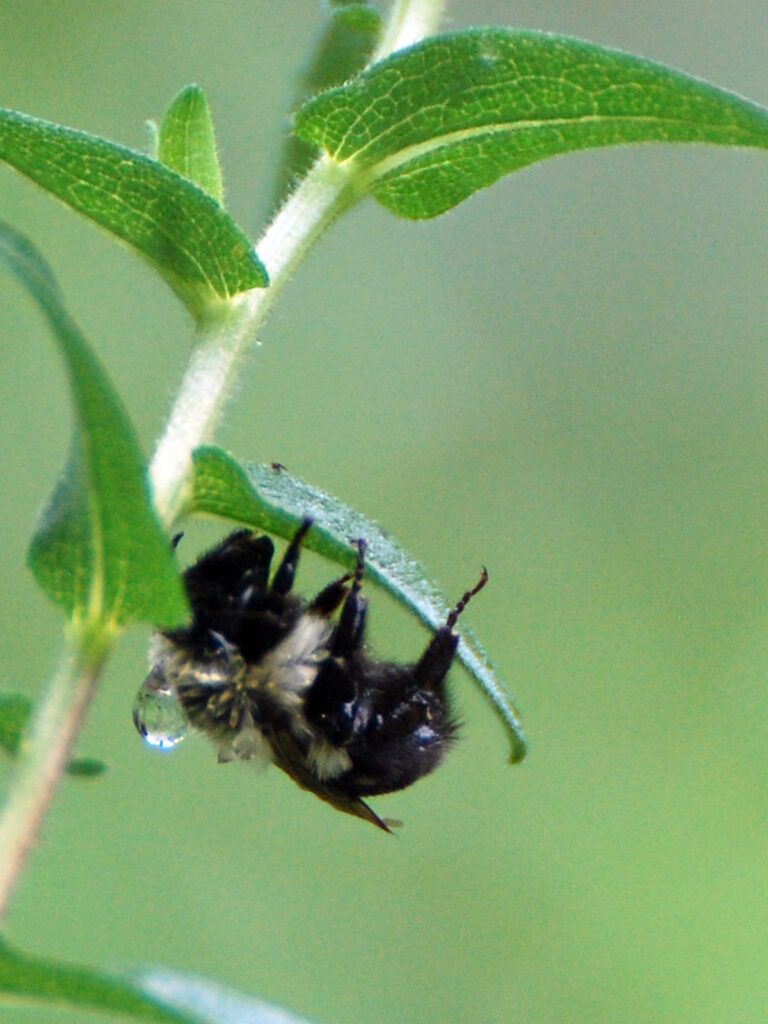
Bees apparently spend nights under flower heads (as in the introductory image) or under leaves.
I’ve enjoyed going out in the early morning and finding these snoozing bumble bees!
Winter
But when insects are in diapause (a state something like hibernation), they need other sources of cover. This happens during the winter in our region. They can overwinter as adults (as do bumble bee queens) or in other stages such as pupae, like some solitary bees. In our neighborhoods of turf grass, asphalt, and excessive fall cleanup, where can they spend the winter?
In bare ground
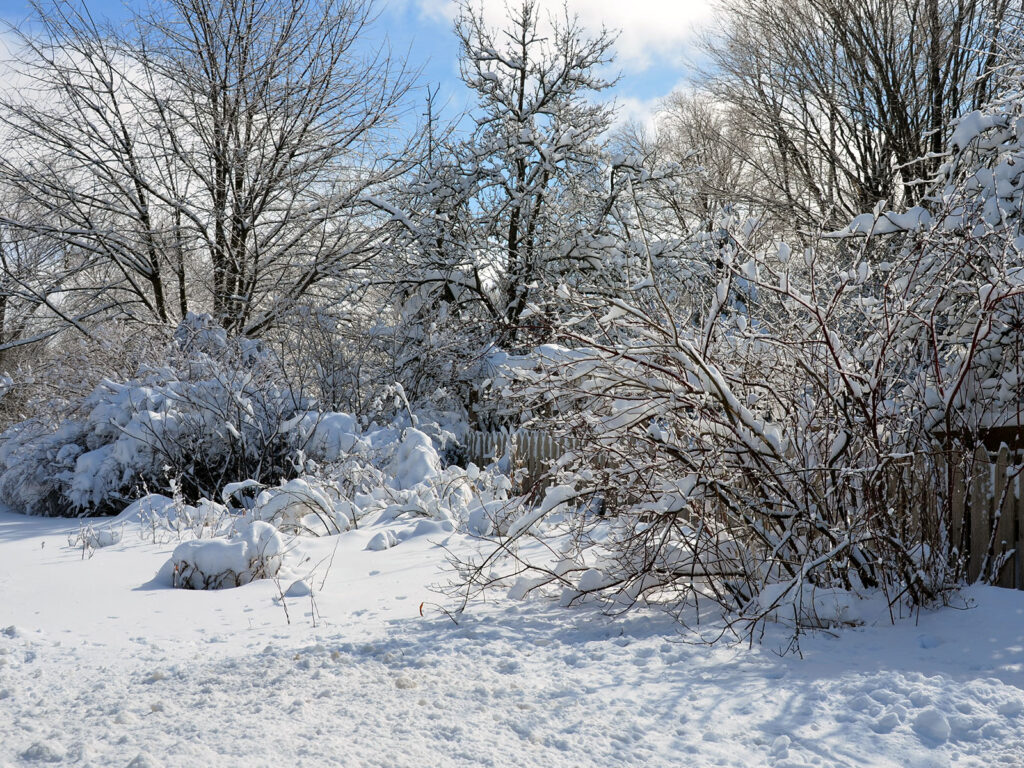
Our hedgerow along the street is full of shrubs and perennials, but there’s plenty of bare ground for overwintering bees.
A bonus is that it’s a north-facing slope. I’ve read that bumble bee queens prefer these colder, snowier slopes since they won’t be tricked into emerging in the spring before nectar and pollen are available.
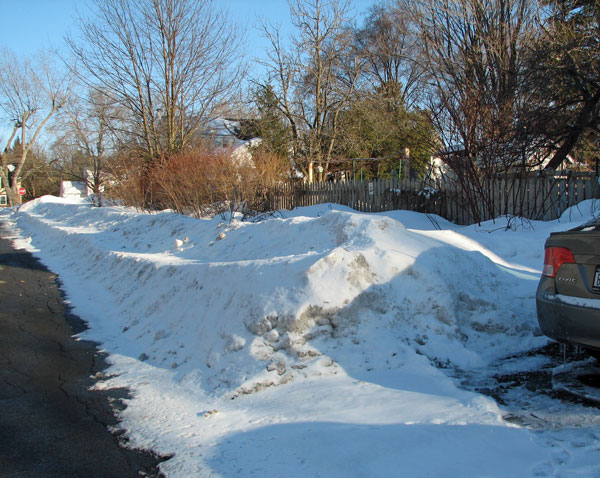
Under all this snow, I’m sure there are bumble bee queens awaiting spring. They certainly won’t emerge too early in the spring!
Our slope (along the fence next to the road) is not only one of the last places in our yard to be snow-free, it’s one of the last places in the whole neighborhood to melt, especially since the plows pile up the snow.
In leaf litter
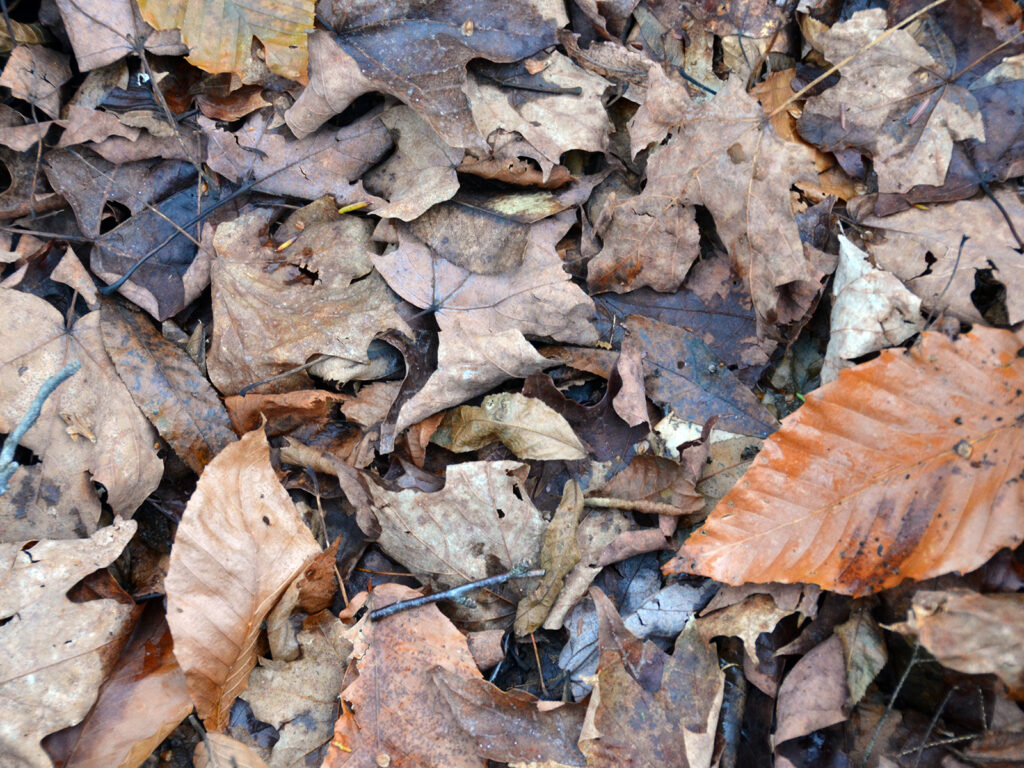
Environmental organizations have been increasingly emphasizing the importance of leaving the leaves.
This is where insects overwinter, including butterflies and moths which overwinter in various life stages.
And, of course, these decomposing leaves nurture soil full of life — soil that is perfect for growing native plants! This is a fundamental source of life on earth, yet conventional landscaping practices treat it as toxic waste!!
In old plant stems
Although eliminating places for insects is part of the reason many people “clean up” their yards in the fall, as Eric Grissell says in his book Insects and Gardens, if you don’t leave a place for the “bad” things to overwinter, you’re also not leaving a place for the “good” things to overwinter …in other words, good things like our pollinators.
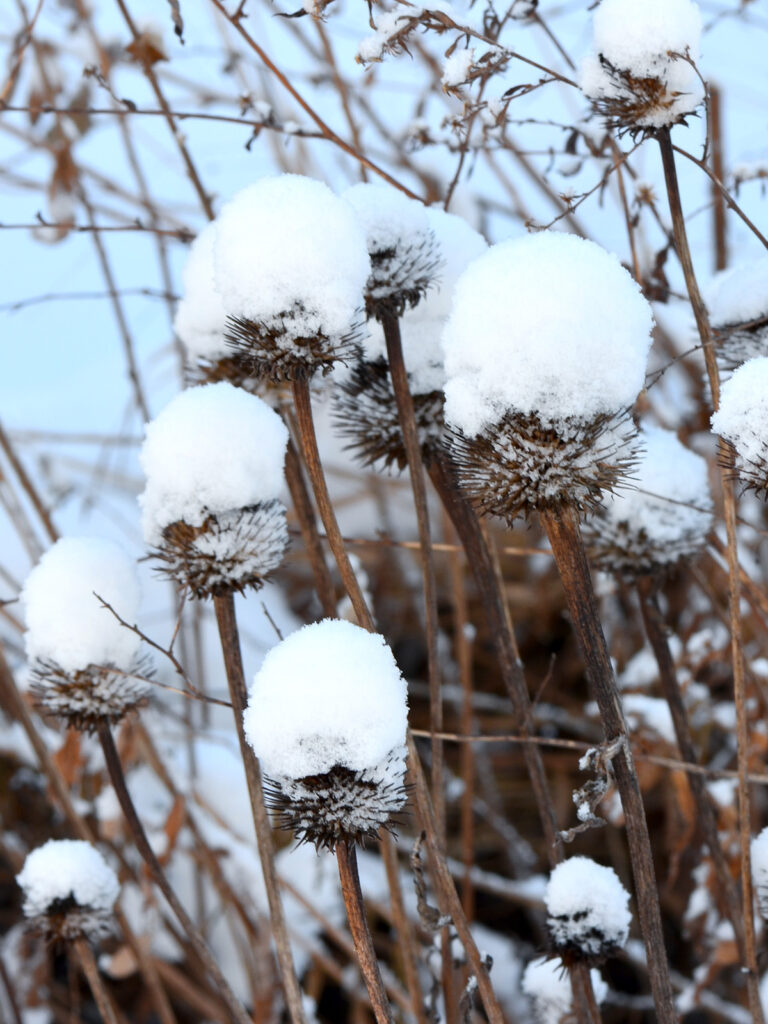
I leave most all of our plants standing throughout the winter. This provides seeds for birds and probably other little creatures, but the stalks also provide a place for insects to overwinter — which then themselves become a source of food for birds.
Resources
- The Xerces Society:
- Where do pollinators go in the winter?
- Nesting and Overwintering Habitat for Pollinators and Other Beneficial Insects – EXCELLENT! A comprehensive guide
- Pollination Guelph:
Reflections
We have 4,000 species of native bees in North America. If we gave them food — flowering native plants — and a place to build their nests, they would be able to take up the slack from decreasing honey bee populations.
~ Douglas Tallamy, Bringing Nature Home
The great and noble service that gardeners can provide for all pollinating insects is to give them asylum — to make the garden a sanctuary for some of the insects that help run the world.
~ Eric Grissell, Insects and Gardens
